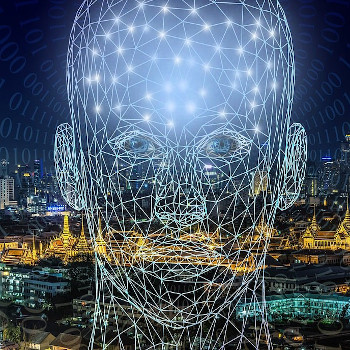
In 2024, cybercriminals will increasingly manipulate texts, images and voices with AI and demand increasing ransoms from companies, say the experts at G DATA CyberDefense.
What cyber risks threaten companies in the coming year? According to G DATA CyberDefense, artificial intelligence (AI) is increasingly becoming a serious threat to IT security. Cybercriminals are increasingly taking advantage of the great potential of artificial intelligence and endangering IT security with fakes. Further challenges such as increasing regulatory requirements and high ransom demands make IT security even more of a Sisyphean task.
Cybercriminals are using AI for more efficient attacks
Cyber defense companies are not the only ones relying on artificial intelligence to detect attempted attacks at an early stage. Cybercriminals abuse AI for their own purposes. In particular, the quality of phishing emails increases - and with it their efficiency. Basically, fakes in all known forms will increase in the coming year - from fake photos and videos to applications and academic papers. In the future, it will be difficult to distinguish phishing emails or fake images from originals. And the rapid increase in counterfeits means that not only more time but also more knowledge is required to unmask such manipulations.
“For economic reasons, when using AI, cyber criminals focus on methods that bring maximum profit with little effort,” says Andreas Lüning, co-founder and board member of G DATA CyberDefense. “We need a coherent concept in order to be able to prove the authenticity of a document or photo in the future – or proof that there is a person behind it.”
Although a purely AI-based attack is still a thing of the future, cybercriminals are also using the technology to support their activities. Here users are targeted. Shock calls are a potential scenario for this. During these calls, the callers pretend to be a family member, doctor, lawyer or emergency service member in order to steal personal information and money.
Old wine in new bottles?
In the future, malware authors will develop additional ways to protect their malware from analysis. This is where variations of old approaches come into play again. These can be little-used and comparatively unknown file and archive formats, or technologies that behave differently beneath the surface than analysis software indicates. Unknown archive formats are potentially interesting precisely because “exotic” formats cannot be checked by a malware scanner - in contrast to classics such as RAR or ZIP.
Another trend in 2024: The amount of damage will increase because increasing professionalization and the associated division of labor among cybercriminals leads to more double-exfill attacks. Two groups of perpetrators blackmail a company at the same time. While one group demands a ransom for not publishing the leaked data, a second group demands money for the decryption of the encrypted information. “Either / Or” is increasingly becoming “both and”.
Regulatory pressure is increasing
With the new NIS 2 directive (Network and Information Security), the EU has introduced a requirement to improve the IT security level in companies. Even if many things are currently unclear or pending in the course of the national legislative process, companies must prepare for them now. NIS-2 finally makes IT security a top priority: Managers will have greater responsibility in the future. However, many boards and management need support to understand the topic. With NIS-2, the need for skilled workers in the area of IT security will continue to increase.
“Companies currently need clarity about the specifications and a schedule for implementation with NIS-2,” says Andreas Lüning. “Regardless of this, they should not remain idle until laws come into force. Cybercriminals don't wait for regulations to come in. Companies should therefore start increasing their resilience to cyberattacks now.”
External security expertise will become even more important in 2024
Given the situation described, IT security continues to be a mammoth task for companies. Since very few companies have the opportunity to build up or hire their own expertise for each sub-area, many companies bring the support of specialized IT security service providers on board. This development will continue to intensify in the coming years – also fueled by increasing legal requirements.
“Anyone who puts their company’s IT security in the hands of a cyber defense company benefits in many ways when using services such as managed endpoint detection and response,” says Tim Berghoff, security evangelist at G DATA CyberDefense. “Experts monitor the network around the clock and can ward off attacks at an early stage. At the same time, it is also ensured that regulatory requirements such as NIS-2 are met and the issue of a shortage of skilled workers is also off the table.”
More at GData.de
About G Data With comprehensive cyber defense services, the inventor of the anti-virus enables companies to defend themselves against cybercrime. Over 500 employees ensure the digital security of companies and users. Made in Germany: With over 30 years of expertise in malware analysis, G DATA conducts research and software development exclusively in Germany. The highest standards of data protection are paramount. In 2011, G DATA issued a “no backdoor” guarantee with the “IT Security Made in Germany” seal of trust from TeleTrust eV. G DATA offers a portfolio from anti-virus and endpoint protection to penetration tests and incident response to forensic analyzes, security status checks and cyber awareness training to defend companies effectively. New technologies such as DeepRay use artificial intelligence to protect against malware. Service and support are part of the G DATA campus in Bochum. G DATA solutions are available in 90 countries and have received numerous awards.
